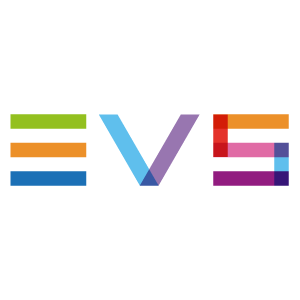Related Research Articles

Advertising is the practice and techniques employed to bring attention to a product or service. Advertising aims to put a product or service in the spotlight in hopes of drawing it attention from consumers. It is typically used to promote a specific good or service, but there are wide range of uses, the most common being the commercial advertisement.

A television advertisement is a span of television programming produced and paid for by an organization. It conveys a message promoting, and aiming to market, a product or service. Advertisers and marketers may refer to television commercials as TVCs.
Google AdSense is a program run by Google through which website publishers in the Google Network of content sites serve text, images, video, or interactive media advertisements that are targeted to the site content and audience. These advertisements are administered, sorted, and maintained by Google. They can generate revenue on either a per-click or per-impression basis. Google beta-tested a cost-per-action service, but discontinued it in October 2008 in favor of a DoubleClick offering. In Q1 2014, Google earned US$3.4 billion, or 22% of total revenue, through Google AdSense. AdSense is a participant in the AdChoices program, so AdSense ads typically include the triangle-shaped AdChoices icon. This program also operates on HTTP cookies. In 2021, over 38.3 million websites use AdSense.

A digital on-screen graphic, digitally originated graphic is a watermark-like station logo that most television broadcasters overlay over a portion of the screen area of their programs to identify the channel. They are thus a form of permanent visual station identification, increasing brand recognition and asserting ownership of the video signal.

Banner blindness is a phenomenon in web usability where visitors to a website consciously or unconsciously ignore banner-like information. A broader term covering all forms of advertising is ad blindness, and the mass of banners that people ignore is called banner noise.
Out-of-home (OOH) advertising, also called outdoor advertising, outdoor media, and out-of-home media, is advertising experienced outside of the home. This includes billboards, wallscapes, and posters seen while "on the go". It also includes place-based media seen in places such as convenience stores, medical centers, salons, and other brick-and-mortar venues. OOH advertising formats fall into four main categories: billboards, street furniture, transit, and alternative.
In marketing, promotion refers to any type of marketing communication used to inform target audiences of the relative merits of a product, service, brand or issue, most of the time persuasive in nature. It helps marketers to create a distinctive place in customers' mind, it can be either a cognitive or emotional route. The aim of promotion is to increase brand awareness, create interest, generate sales or create brand loyalty. It is one of the basic elements of the market mix, which includes the four Ps, i.e., product, price, place, and promotion.

Digital signage is a segment of electronic signage. Digital displays use technologies such as LCD, LED, projection and e-paper to display digital images, video, web pages, weather data, restaurant menus, or text. They can be found in public spaces, transportation systems, museums, stadiums, retail stores, hotels, restaurants and corporate buildings etc., to provide wayfinding, exhibitions, marketing and outdoor advertising. They are used as a network of electronic displays that are centrally managed and individually addressable for the display of text, animated or video messages for advertising, information, entertainment and merchandising to targeted audiences.

1st & Ten is a computer system that augments televised coverage of American football by inserting graphical elements on the field of play as if they were physically present; the inserted element stays fixed within the coordinates of the playing field, and obeys the visual rules of foreground objects occluding background objects. Developed by Sportvision and PVI Virtual Media Services, it is best known for generating and displaying a yellow first down line over a live broadcast of a football game—making it easier for viewers to follow play on the field. The line is not physically present on the field, and is seen only by the television audience.
In-game advertising (IGA) is advertising in electronic games. IGA differs from advergames, which refers to games specifically made to advertise a product. The IGA industry is large and growing.
In broadcasting, local insertion is the act or capability of a broadcast television station, radio station or cable system to insert or replace part of a network feed with content unique to the local station or system. Most often this is a station identification, but is also commonly used for television or radio advertisements, or a weather or traffic report. A digital on-screen graphic, commonly a translucent watermark, may also be keyed (superimposed) with a television station ID over the network feed using a character generator using genlock. In cases where individual broadcast stations carry programs separate from those shown on the main network, this is known as regional variation or an opt-out.

Digital marketing is the component of marketing that uses the Internet and online based digital technologies such as desktop computers, mobile phones and other digital media and platforms to promote products and services. Its development during the 1990s and 2000s changed the way brands and businesses use technology for marketing. As digital platforms became increasingly incorporated into marketing plans and everyday life, and as people increasingly use digital devices instead of visiting physical shops, digital marketing campaigns have become prevalent, employing combinations of search engine optimization (SEO), search engine marketing (SEM), content marketing, influencer marketing, content automation, campaign marketing, data-driven marketing, e-commerce marketing, social media marketing, social media optimization, e-mail direct marketing, display advertising, e–books, and optical disks and games have become commonplace. Digital marketing extends to non-Internet channels that provide digital media, such as television, mobile phones, callback, and on-hold mobile ring tones. The extension to non-Internet channels differentiates digital marketing from online advertising.
Side-by-side is a type of split-screen presentation format used on television broadcasts, particularly as a means of continuing to show a view of ongoing live content, whilst simultaneously airing commercials alongside them. Typically, only the audio of the advertising is played.
Social network advertising, also social media targeting, is a group of terms that are used to describe forms of online advertising/digital marketing that focus on social networking services. One of the major benefits of this type of advertising is that advertisers can take advantage of the users' demographic information and target their ads appropriately.

EVS Broadcast Equipment SA is a Belgian company that manufactures live outside broadcast digital video production systems. Their XT-VIA production video servers enable the creation, editing, exchange and playout of audio and video feeds.
PVI Virtual Media Services is one of the companies behind the virtual yellow-down-line shown on television broadcasts of American football games in the United States and Canada. Founded in 1990 as Princeton Electronic Billboard, PVI Virtual Media Services was a wholly owned subsidiary of Cablevision Systems Corporation with a research and operations facility in Lawrenceville, NJ before being acquired by ESPN in December, 2010.
Twitter Amplify is a video advertising product that Twitter launched for media companies and consumer brands in May 2013. The product gives broadcasters the opportunity to publish real-time in-tweet video clips that are accompanied by pre-roll or post-roll advertisements. It is Twitter's major initiative in social television, designed to enhance the user experience with premium and timely TV highlights, enable broadcasters to reach new audiences and provide brands with a cross-platform tool for reaching the social conversation around major events.
Major annual or one-time televised mega-events can draw large viewership and significant interest from regional, national, and international advertisers. Advertisers strategically unveil major marketing campaigns in conjunction with televised mega-events and create memorable advertising content with high entertainment value. Some mega-event advertising, such as during the Super Bowl, even attracts a subset of viewers interested primarily in the advertising content. This type of advertisement is an increasingly common television phenomenon as televised mega-events become more popular and available globally.
TV advertisements by country refers to how television advertisements vary in different countries and regions.
An annoyance factor, in advertising and brand management, is a variable used to measure consumers' perception level of annoyance in an ad, then analyzed to help evaluate the ad's effectiveness. The variable can be observed or inferred and is a type that might be used in factor analyses. An annoyance effect is a reference to the impact or result of an annoying stimulus, which can be a strategic aspect of an advertisement intended to help a message stick in the minds of consumers. References to annoyance effects have been referred to as annoyancedynamics. While the words "factor" and "effect," as used in the behavioral sciences, have different meanings, in casual vernacular, they have been used interchangeably as synonymous. A more general or umbrella term would simply be advertising annoyance.
References
- ↑ Lynwood, Jeremiah (2014). Digital Advertising : Issues and Trends in an Online World. New York: Nova Science Publishers, Inc.
- ↑ "Finding Brand Success In The Digital World". Forbes.
- ↑ "EVS Epsio offside line creator". Broadcast.
- ↑ Kerschbaumer, Ken. "Fox Sports Australia First To Use EVS Epsio Graphics System". Sports Video Group.
- ↑ "ATP Finals London 2019 - LIVE". uniqFEED AG. Retrieved 2021-05-10.
- ↑ "ITTF Australian Open 2019 - LIVE". uniqFEED AG. Retrieved 2021-05-10.
- ↑ "Sports branding For sport events, stadium branding and hospitality". Amayse Sports Branding.
- ↑ Murphy, Mike. "Virtual Ads Create a New Dimension for Sports Sponsorships (Literally)". Medium.
- ↑ Deutsch, Askan (2000). "Sports Broadcasting and Virtual Advertising: Defining the Limits of Copyright Law and the Law of Unfair Competition". Marquette Sports Law Review.